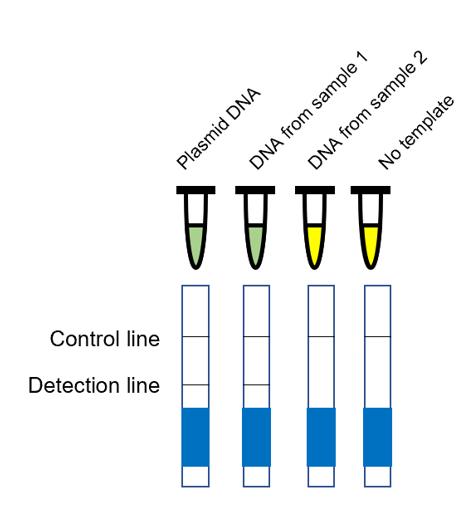Despite its good specificity and sensitivity, the requirement of high precision of thermal cycling in PCR prevents this powerful method for being widely used as a routine diagnostic tool. The recent invention of loop-mediated isothermal amplification (LAMP) provides a new alternative for molecular diagnosis, which requires the design of four to six primers, including external primers and internal primers. It is only necessary to use Bst DNA polymerase, with strand displacement and recognition elongation effect, to amplify the target fragment in large and rapid quantities at 60 - 65°C.
Powered by our professional scientists and their years of field experience, Lifeasible provides detection of plant nematodes by LAMP and crossing priming amplification (CPR) to assist our customers in the identification of plant nematodes. With our cutting-edge platforms, we can achieve satisfactory results for our clients worldwide.
 Fig.1 Visual inspection and lateral-flow strips used for the detection of LAMP products.
Fig.1 Visual inspection and lateral-flow strips used for the detection of LAMP products.
| Steps | Operation Methods |
| DNA Extraction |
|
| Primer Design | The specific primers for the LAMP reaction are designed using the software program. |
| LAMP Reaction |
|
| Lateral-Flow Strip Detection | After the LAMP reaction, 10 µl of FITC-labeled probe designed to hybridize to an internal region of the target sequence is added to the reaction mixture and incubated at 95°C for 5 min. The reaction mixture is diluted with 100 µl of running buffer and applied directly to detect strips. |
| Sensitivity Test | A plasmid DNA containing the target sequence is made using the pGEM-T Easy System. |
Lifeasible offers the detection services of plant nematodes for the convenience of your research. Our goal is to help our clients achieve meaningful results through powerful and consistent approaches. If you are interested in our services or have any questions, please feel free to contact us or make an online inquiry.